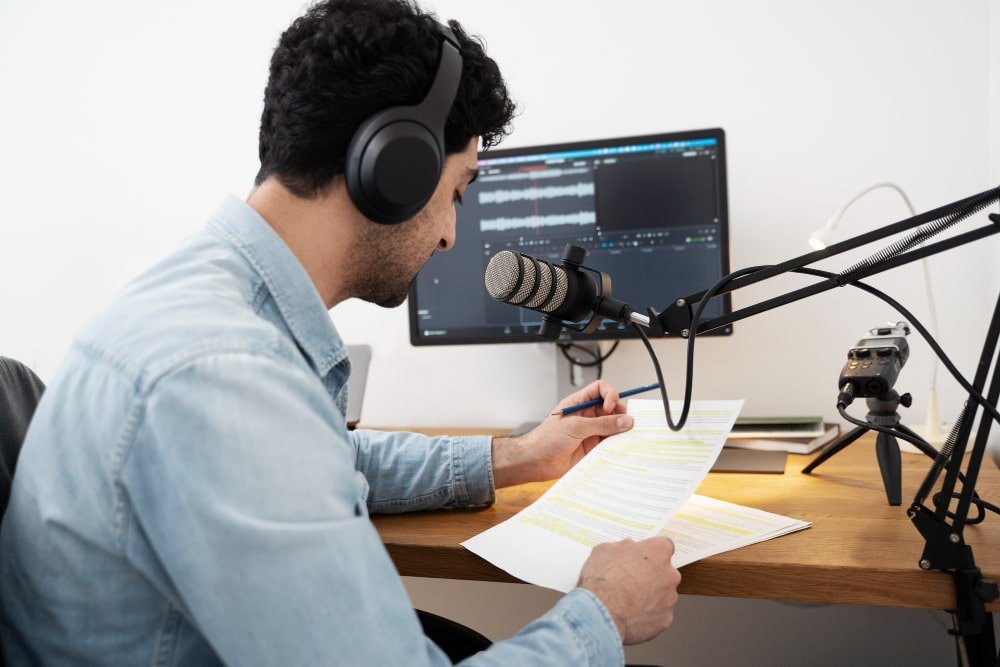Transcribing audio, which involves the transformation of spoken words into written text, holds a crucial role across a diverse range of professions and industries such as journalism, healthcare, legal affairs, education, and entertainment. As our world becomes more digitized and data-centric, the need for precise and efficient transcription services is on the rise.
In this article, we will explore the complex landscape of audio transcription, shedding light on the methods, obstacles, and technologies that underpin this indispensable skill.
The Vital Role of Audio Transcription
Before answering the question “how to make a transcript of an audio file”, it’s essential to underscore the multifaceted significance of audio transcription, as it fulfills several pivotal roles in contemporary society:
- Accessibility: Audio transcription work makes audio content accessible to individuals with hearing impairments, ensuring equal access to information.
- Documentation: Transcripts serve as a reliable record of spoken conversations, interviews, lectures, and meetings, which can be invaluable for reference and legal purposes.
- Searchability: Transcripts allow for easy searching and indexing of audio and video content, making it more discoverable on the internet and within databases.
- Translation: Transcription serves as a starting point for translation into different languages, enabling global reach.
- Content Creation: Writers, journalists, and content creators often use transcripts as the basis for articles, reports, and captions, saving time and effort in content production.
The Art of Audio Transcription
Transcription is more than just typing what you hear; it involves several nuanced skills:
- Active Listening:
Transcribers need to listen attentively to audio recordings, even in challenging acoustic environments or when speakers have accents or speak rapidly.
- Language Proficiency:
Proficiency in the language spoken in the recording is crucial for accurately transcribing content. Familiarity with regional accents and dialects is an added advantage.
- Context Understanding:
Transcribers must understand the context of the conversation to differentiate between homophones (words that sound the same but have different meanings) and to accurately capture speaker intent.
- Punctuation and Formatting:
Proper punctuation and formatting are essential to convey the tone and flow of spoken language accurately.
- Timestamping:
In some cases, transcriptions require timestamping to indicate when specific statements are made. This is common in legal or academic transcriptions.
The Science of Audio Transcription
The field of transcription has undergone remarkable evolution, thanks to the progress in technology. Let’s take a closer look at the world of audio transcription, examining the scientific aspects that drive this practice forward:
- Automatic Speech Recognition (ASR) Technology:
ASR technology uses machine learning and neural networks to convert spoken language into text. It has improved dramatically in recent years, making it possible to transcribe large volumes of audio rapidly.
- Speaker Identification:
Advanced transcription tools can identify and differentiate between multiple speakers in a conversation, attributing text to the correct person.
- Natural Language Processing (NLP):
NLP techniques are employed to improve the accuracy and readability of transcripts. This includes resolving ambiguous language and correcting grammar errors.
- Customization:
Many transcription services allow users to train the system on specific terminology or accents to enhance accuracy for domain-specific content.
Tools and Techniques for Audio Transcription
In order to optimize and enhance the transcription process, transcribers frequently employ an array of tools and techniques:
- Transcription Software:
Specialized transcription software, such as Express Scribe, Transcriber for WhatsApp, or Otter.ai, helps transcribers manage audio playback, insert timestamps, and format text efficiently.
- Speech Recognition Tools:
Some transcription software integrates Automatic Speech Recognition (ASR) technology to assist transcribers by suggesting text based on audio input.
- Keyboard Shortcuts:
Transcribers often use keyboard shortcuts to pause, rewind, and play audio, increasing their transcription speed.
Challenges in Audio Transcription
Despite the significant progress achieved in transcription technology, it is noteworthy that a range of challenges still persist:
- Poor Audio Quality:
Background noise, poor recording equipment, and low-quality audio can make transcription difficult.
- Accents and Dialects:
Accents and dialects can pose challenges, especially when transcribing content with speakers from diverse linguistic backgrounds.
- Speaker Overlaps:
Multiple speakers talking simultaneously can be challenging to transcribe accurately.
- Homophones:
Words that sound the same but have different meanings can lead to errors in transcription if not understood in context.
- Jargon:
Transcribing specialized content with technical terminology requires domain-specific knowledge.
Audio transcription is a blend of art and science, requiring both linguistic expertise and technical proficiency. With the continued advancement of technology, transcription tools and services will likely become even more accurate and accessible, further expanding the utility of transcription in our modern world.
If you are in search of an audio transcription company, look no further than AfroLingo, a recognized industry leader in the field. We prioritize absolute confidentiality and consistently deliver exceptional, meticulously polished professional services. Our track record includes successful collaborations with a wide range of direct clients, and our extensive network includes affiliations with over 100 multi-language vendors (MLVs). AfroLingo is fully equipped and prepared to assist you in achieving your goals, particularly in the areas of audio transcription.


